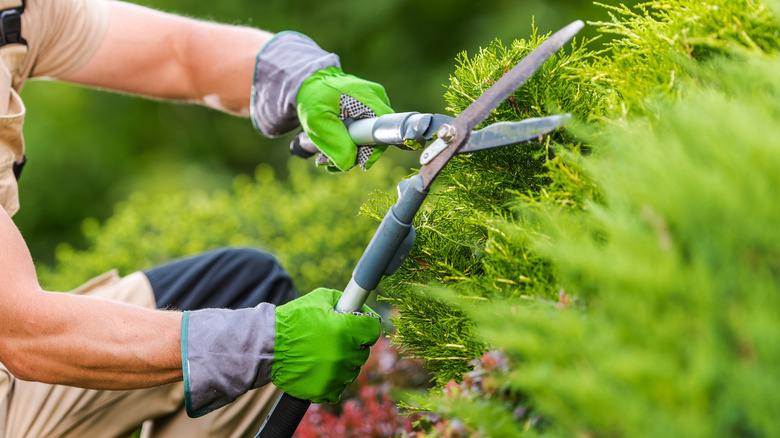The Severe Trim Technique Your Vigorous Plants Will Thank You For
Toward the end of the summer, the garden can look overgrown, especially if you haven't regularly kept up with pruning and trimming plants throughout the season. If you've even left for one vacation, you may have noticed your plants looking a bit unruly upon your return. For procrastinators or busy bees, taking time to meticulously prune each plant, particularly for those with expansive gardens, the task can seem daunting. Well, fear not! Some gardeners are pulling the ripcord on neat and tidy and taking a hedge cutter to their garden with surprisingly positive results.
Vigorous garden plants, particularly flowering annuals, can become leggy and wild deep in the season. At this point, they may begin to lose the aesthetic for which you bought them earlier in the year, and they are in desperate need of a haircut. Rather than investing the time and energy in learning to prune them properly, why not take a chance on a new hairdresser and trim them all the way back? Like they always say, it'll grow back eventually!
How to severely trim back your vigorous plants
In a YouTube video, Jenny of Gardening with Creekside claims that the best way to confront overgrown or dying annuals is simply to cut them all the way back. She claims, "These annuals really, really respond well to being pruned because they are such vigorous growers. They bloom on new growth." In her video, Jenny takes a pair of electric hedge trimmers and very casually cuts her boxed annuals back to about twelve inches in height. She takes the same approach for every plant, disregarding individual requirements and instead indulging the urge to complete the process quickly and efficiently. Her argument essentially is that the more you trim the plants, the more vigorously they will return within just a few weeks.
With her trimmers, Jenny removes all overgrowth and cuts back her flowers along the edge of her boxes. Even with an extensive garden, Jenny completes the trimming process in about 10 minutes. While there is plenty of debris to be collected and composted, the actual pruning itself is quite short and inexhaustive, collapsing what could have been an entire day of meticulous cutting. Though her garden does look like a five-year-old went to town on their bangs with a pair of scissors, Jenny promises that within just a few weeks, her flowering annuals will be blooming again, healthier and stronger than the first bloom.
Why this technique works well
Severely trimming annual plants is essential for their overall health and aesthetic appeal. This practice, known as "deadheading" or "pinching back," involves the removal of spent flowers, damaged foliage, or overgrown stems. By doing so, the plant's energy is redirected from producing seeds towards new growth and flower production. This encourages the plant to continue blooming vigorously throughout the growing season.
Additionally, severe trimming helps maintain your plants' compact shape and prevents them from becoming too leggy or straggly in appearance or growth. Cutting them back stimulates lateral growth and additional branching, resulting in a fuller and more lush appearance. Removing dead or diseased parts also reduces the risk of pest and disease infestations, promoting better overall plant health. After trimming, be sure to remove any cut pieces from the tops of flower or garden boxes to avoid attracting pests and to improve the airflow between plants.
For gardeners and landscape enthusiasts, annuals' beauty is in their vibrant and abundant blooms. Regular trimming, or in this case severe trimming, enhances this beauty by prolonging the flowering period and promoting a more uniform and attractive display. Though there will be a lull in this beauty initially, the annuals will recover and look better in the end than they would if they were allowed to continuously overgrow in the garden.

